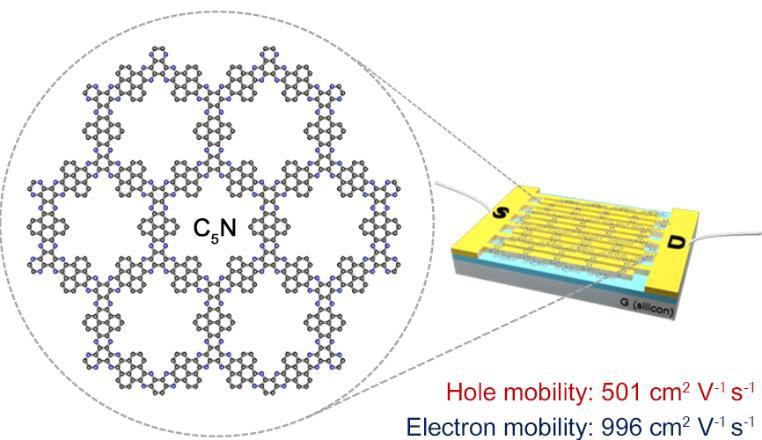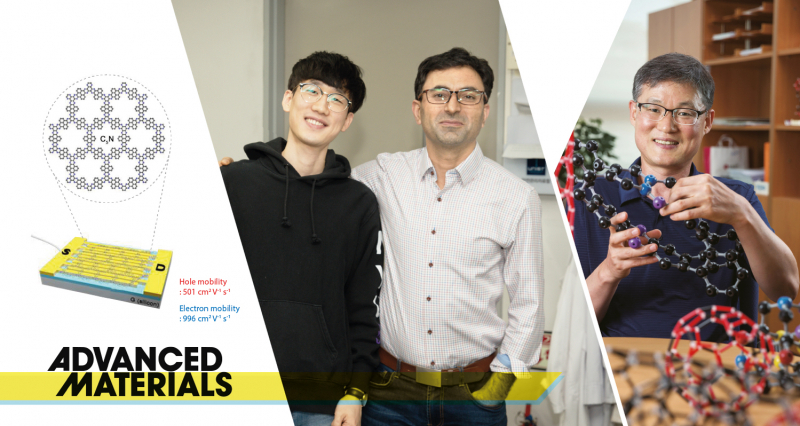Organic semiconductors are strong candidates for creating rollable displays or wearable devices. Yet, the low charge carrier mobility still hampers the performance and applicability of devices based on organic semiconductors.
A recent study, affiliated with UNIST has solved this issue by significantly enhancing the charge carrier mobility in organic semiconductors. This was a remarkable result and generated considerable interest in the research community. This breakthrough has been led by Professor Jong‐Beom Baek and his research team in the School of Energy and Chemical Engineering at UNIST.
In this study, the research team succeeded in the design and synthesis of fused aromatic network (FAN) structures with C5N basal plane stoichiometry. And, thin films were also cast from C5N solution onto silicon dioxide substrates. In order to characterize the electrical properties of films, field-effect transistors (FETs) using C5N thin films as an active layer were also fabricated in a bottom-gate top-contact configuration.

Figure 1. Schematic presentation of the preparation and proposed structure of C5N.
According to the research team, the C5N thin flakes, isolated by polydimethylsiloxane stamping, exhibit ambipolar charge transport and extraordinarily high electron and hole mobilities, surpassing the performance of most pristine organic materials without doping. Such findings demonstrate their vast potential for applications in thin‐film optoelectronic devices, noted the research team.
Their findings also showed that the conductive thin films are also environmentally stable against oxidation and thermal degradation. Among 2D layered organic materials, this material exhibited high charge carrier mobilities without doping and superior conductivity even after doping with HCl at 160 °C.
“Our findings demonstrate their vast potential for applications in thin‐film optoelectronic devices,” said Professor Baek. “Therefore, the current research constitutes a significant leap in the design and further enhancement of stable 2D-based organic structures.”
Their findings have been published in the January 2021 issue of Advanced Materials. This study has also been jointly participated by Professor Joon Hak Oh and his research team in the School of Chemical and Biological Engineering from Seoul National University. This study has been supported by the Creative Research Initiative (CRI), Science Research Center (SRC), Young Researcher, Mid-Career Researcher program, and Nano Material Technology Development Program through the National Research Foundation (NRF) of Korea, funded by the Ministry of Science and ICT (MSIT).
Journal Reference
Javeed Mahmood Eun Kwang Lee Hyuk‐Jun Noh, et al., “Fused Aromatic Network with Exceptionally High Carrier Mobility,” Advanced Materials, (2021).













Pingback: Scientists greatly enhanced the price provider mobility in organic semiconductors | My News Hunt()